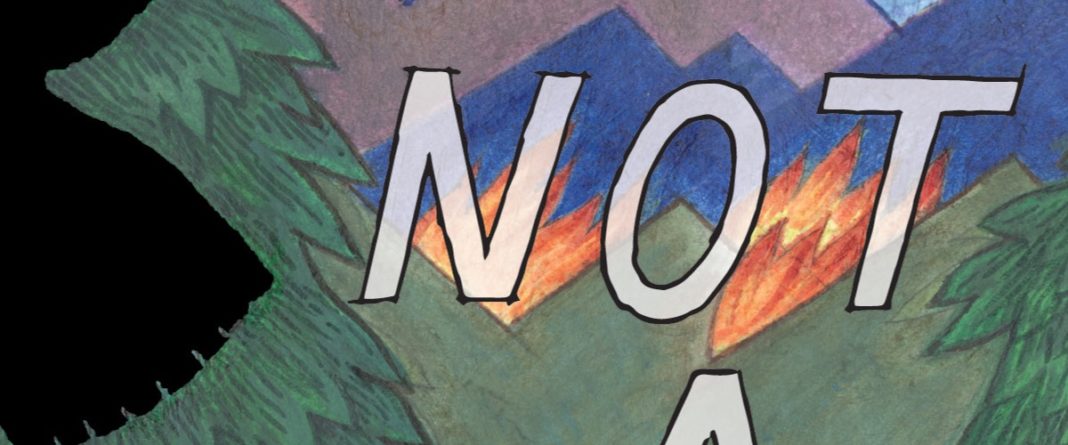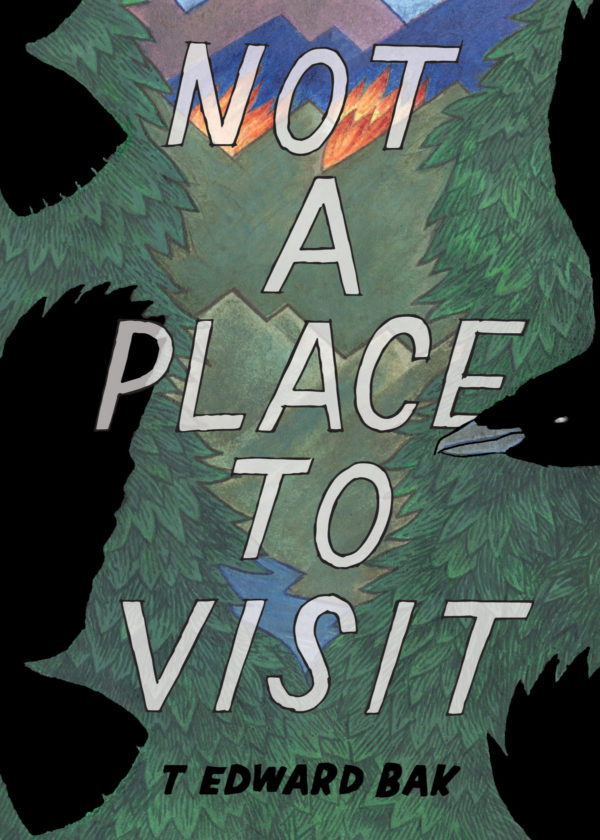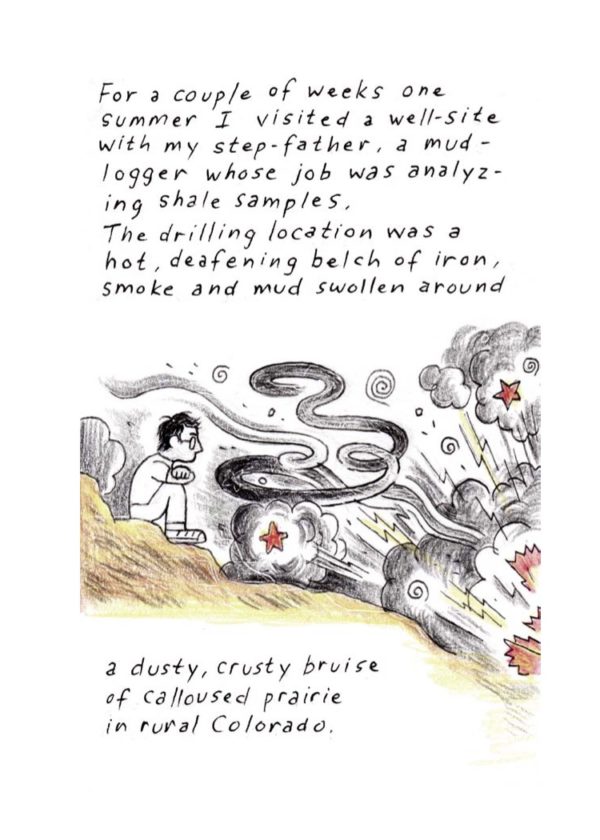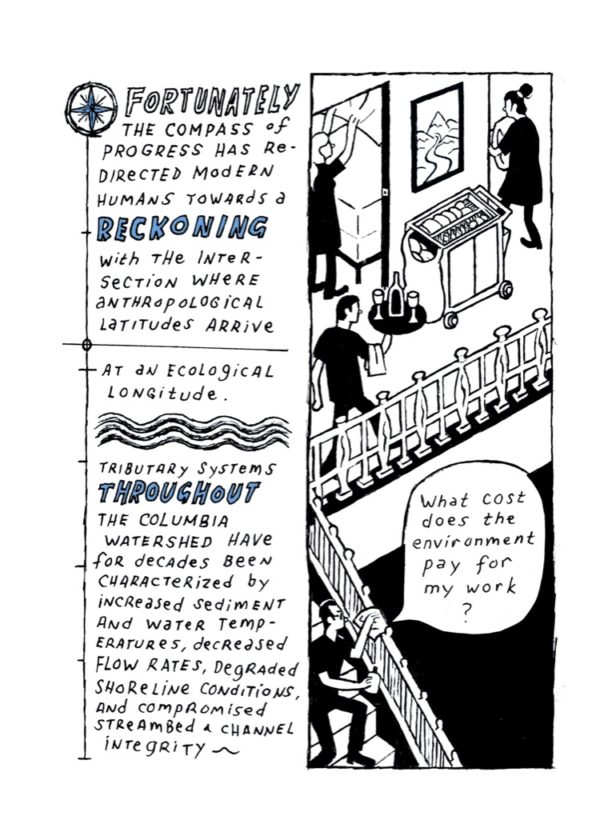Not a Place to Visit
By T. Edward Bak
Floating World Comics
It’s one of those fortuitous intellectual coincidences that I sat down to read and review T. Edward Bak’s Not a Place to Visit during the Covid-19 pandemic. Not that the book has anything to do with the spread of that disease or any disease really, but my reading of it coincided with Kyle Harper’s article “Coronavirus Is Accelerating History Past the Breaking Point” in Foreign Policy crossing my screen.
Harper is a professor of classics and letters at the University of Oklahoma and one of his focuses is the history of health. In his Foreign Policy piece, he speaks to the way that humans alter the natural world and the unintended consequences of that mission:
“The Anthropocene has been facilitated and defined by humanity’s efforts to disinfect the planet—to make it comfortably habitable for humans. We live in highly artificial environments that are, more than we usually pause to think, constructed precisely to keep our germs at bay. Our built environments, our management of food and water and waste, our physical routines and chemical regimes—all are anti-pathogenic. This pattern creates intense countervailing pressures. The global population is sprinting toward 8 billion. We encroach more than ever on the natural habitats and wild animals that are the reservoir of potential sources of new diseases. We are more interconnected than ever. The interface between our species and our possible parasites is wider than at any time in the human past. The incentive for microbes to exploit humans has never been greater, yet our tools to combat them are more powerful than ever. We live in the middle of this uneasy and unstable standoff.”
As I said, Bak isn’t addressing epidemiology here, but instead issues more related to environment, politics, and culture, but the effect is the same. What’s missing from Harper’s text that is crucial in Bak’s is the inclusion of ethnicity or race in the study of the effects of altering nature, as well as economic class, since these efforts disproportionately wreak havoc on populations of color, immigrant communities, and the working class and poor. With this in mind Not a Place to Visit partly functions as a social roadmap that directly links, say, your energy usage or your tourism to the negative effects on native populations.
Not a Place to Visit is structurally a collection of short works gathered from various sources, unified by the theme of human alteration to the landscape. With each selection, Bak has an intro to give it some context, why the work exists in the first place and also supplemental information about the issues addressed.
The first story “Sometimes A Place” benefits from the introduction in that it gives Bak the opportunity to fill out the autobiographical aspects of the piece, which stretch back to the experiences of his immigrant grandparents and land-ownership that goes back even further, which moves forward to his own life and uses his family’s experience to connect some larger environmental circumstances with his own personal experience. The story itself is more gentle poetry than historical narrative, with Bak’s color work bringing a charming geometry that matches the words and concept as a kind of visual poetry.
This is followed by “Never Enough,” originally done for The Nib, that is a more fact-heavy examination of the relationship between the oil industry in Colorado and the native populations, with aspects of it again reaching into Bak’s personal history. The non-fiction delivery of the words is balanced by more graceful color illustration work, here a bit more simple than in the previous story, but that’s necessary given the heaviness of the information you need to take in here
“Voices of Celilo Falls” is a collaboration with Sarah Mirk for a collection of comics about Oregon History that begins with a native Coyote myth about the creation of falls and their place in local salmon fishing and extends to the creation of a new dam along the Columbia River in 1957 that alters the lives of the local people and the salmon, and becomes a symbol for the dishonesty with which government agencies treat the native populations that traditionally lived off the river.
This is followed by the title story, which is part environmental tour of the Columbia River and part reminiscence of Bak’s experience working on large riverboats for tourists in which he maps out the disconnect between white nostalgia for life on the river along with the fetishizing of Native culture and the reality of the destruction that has unfolded there thanks to the very choices of these white tourists. It’s possibly the most passionate indictment in the collection, which Bak rounds out with an autobiographical travelogue of a trip he and cartoonist Julia Wertz took to the Salton Sea in California, amusingly combining the history and ecology of the region with personable cartooning of the interaction of the two friends.
What’s obvious about Bak is that he knows his stuff. I’ve read plenty of comics that tread similar territory in regard to the subject matter, the science and history aspects of environmental concerns, but they often seem studied, whereas Bak presents the information in a more natural way, as if this is just knowledge he has. Whether that’s the case or not, it certainly seems to me that he has some much bigger thoughts and wider connections that he’s capable of making and that he seems to be working his way up to. Not a Place to Visit is an excellent primer to where he might be headed and I hope he gets the chance to move further in that direction because I think comics could benefit from his voice.








